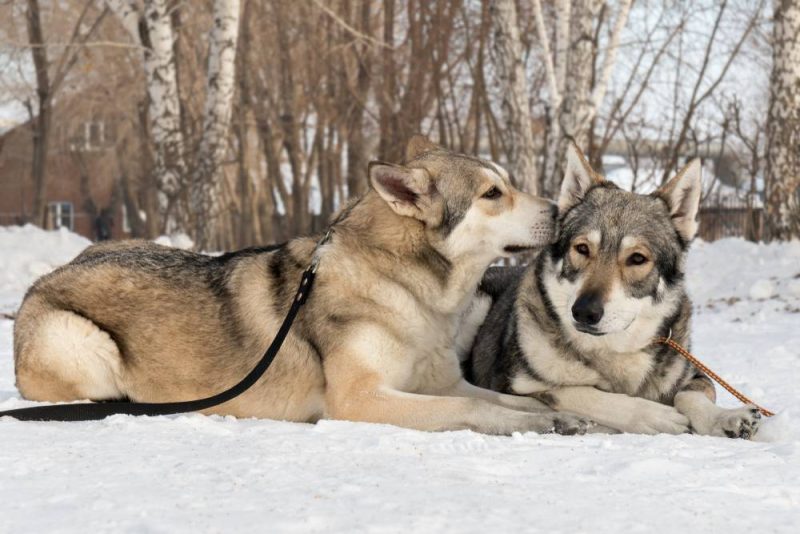It’s a sad fact of life that our canine companions have much shorter lifespans than we do, so it’s inevitable that as a dog parent, you’ll suffer one or more losses throughout your life. Losing a dog is a heartbreaking experience, whether they had a long, happy life or their life was cut short. As much as you don’t want to consider your pet passing away one day, you should be prepared. So, have you ever wondered what to do if your dog dies at home rather than at the vet?
If your dog dies at home, one of the first things you should do is consult a vet. After that, there are a few more steps you’ll need to get through to properly care for your pup after they’ve passed. Here’s a look at exactly what to do if your dog dies at home.

Here’s What to Do if Your Dog Dies at Home
As much as you may not want to, you’ll need to move quickly if your dog dies at home to ensure they’re properly cared for. Here are the steps you should take to do that.
1. Assess
Are you 100% sure that your dog has died? Check to see if you feel a pulse or can feel breath coming from them. If you find none of these signs, it’s safe to say your pet has passed away. However, if you’re unsure if they truly have, get your dog to the vet immediately. You may also want to have someone perform canine CPR on your dog while you do so, but to safely do CPR on your pet, you’ll have to research that before you need it, as CPR for animals is different than for humans.

2. Contact a Vet
If you’ve ascertained that your dog has indeed passed away, the next step is to contact a veterinarian. You can then take your pet to the vet so they can confirm your dog has passed away, or the vet might be able to come to you to take your pet’s remains or recommend a company that can handle that. Some veterinarian offices can even store a dog’s body for a couple of days to give you time to decide whether you want to bury your pet or cremate them.
Did you know you can speak to a veterinarian without having to travel? Just head over to PangoVet. It's our online service where you can talk to a vet online and get the advice you need for your pet — all at an affordable price!

3. How to Handle Your Dog’s Body
This step is unpleasant to think about, but it’s one you should know how to do. Chances are you’ll have to handle your dog’s body if only briefly, to move them to a different area, take them to the vet, or while you prepare a burial site for them if you are burying them at home. An animal’s body begins to decompose immediately after death, so you cannot have your dog lying around while you wait for someone to come pick up their body or if you can’t bury them right away.
When handling your dog’s body, wear gloves. You also need a towel or other absorbent material, as an animal’s body releases fluids upon or right after death. Arrange your dog on the towel but be aware that bodies feel different after death. Your pet’s body will be totally limp until rigor mortis begins to set in, so be careful when moving them onto the towel. Lay your pet out how you want them to be (curled up as if sleeping might be a good choice and may make this part a bit easier), then wrap them in the towel. Finally, you’ll want to put your pet’s body in a cool, dry place away from sunlight. However, if it will take 24 hours or longer to prepare for burial or cremation, you’ll ideally want to use refrigeration or freezer storage to store your pet’s body.

4. Decide What to Do Next
Now comes the decision of whether to bury your dog at home, have them buried elsewhere, or have them cremated. If you want to bury your pet, but not at home, there are aftercare companies for pets that can handle arrangements for that. The same goes for cremation. If you’re unsure who to contact for these services, ask a vet, as they should have a recommendation.
If you want to bury your dog at home, you should first check your local laws because some places don’t allow for this. If it’s fine to bury your dog on your property, you should first remove any non-biodegradable materials from them (such as plastic bags). Then, make sure your burial site is in an area that isn’t likely to erode and bury your pet at least 3 feet below ground as a general guide.

Conclusion
The thought of your beloved pup passing away isn’t something you want to dwell on, but you should know what to do if they die at home. If a dog dies at home, the above steps will ensure that your dog’s body is taken care of properly, whether you want to bury them at home or elsewhere or have them cremated. Once the burial or cremation is complete, you may want to put up a memorial or headstone for your dog somewhere to help remember them. After that, take all the time you need to grieve.
See Also:
- Who Will Care for My Dog After I Die? Important Things to Consider
- How Would You Feel if Your Vet Performed an Autopsy on Your Deceased Pet Without Your Permission?
Featured Image Credit: Rhythmatique, Shutterstock


















